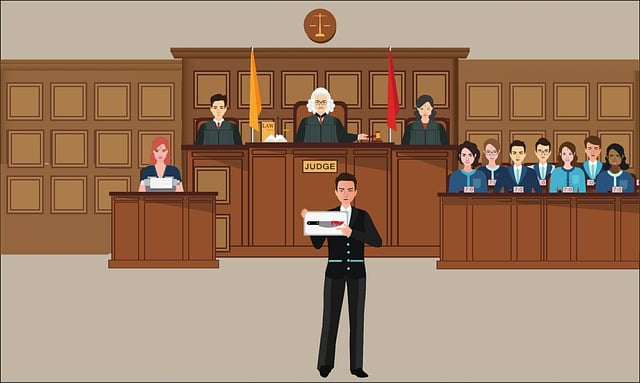Category: personal injury legal advice
Personal Injury Legal Advice: Navigating the Complexities for Justice and Compensation
Introduction
Personal injury legal advice is a critical pillar of legal support for individuals who have suffered harm due to another party’s negligence or intentional actions. This comprehensive guide aims to delve into the intricacies of personal injury law, offering valuable insights to both victims and legal professionals. We will explore various facets, from understanding the core principles to analyzing global trends and technological innovations that shape this domain. By the end, readers will grasp the significance of seeking expert legal counsel in personal injury cases and be equipped with knowledge to make informed decisions.
Understanding Personal Injury Legal Advice: A Comprehensive Overview
Definition:
Personal injury legal advice refers to professional guidance and representation provided to individuals who have sustained physical or emotional injuries as a result of someone else’s carelessness, recklessness, or intentional misconduct. This legal assistance is tailored to help victims navigate the complex process of filing claims, negotiating settlements, or litigating cases in pursuit of compensation for their losses.
Core Components:
- Case Assessment: Lawyers specializing in personal injury law begin by thoroughly evaluating the merits of a case. They examine evidence, witness statements, medical records, and relevant laws to determine liability and assess potential damages.
- Legal Strategy Formulation: Based on their assessment, attorneys develop strategic plans. This may involve negotiating with insurance companies, preparing for trials, or exploring alternative dispute resolution methods like mediation.
- Client Representation: Legal professionals act as advocates for their clients, ensuring their rights are protected throughout the legal process. They communicate with opposing parties, attend hearings, and present arguments on behalf of the injured party.
- Damages Calculation and Recovery: A significant aspect is calculating the monetary value of losses, including medical expenses, lost wages, pain and suffering, and other compensatory damages. Lawyers fight for fair settlements or verdicts to ensure clients receive adequate compensation.
Historical Context:
Personal injury law has evolved over centuries, reflecting societal changes and shifting public expectations regarding accountability and justice. Historically, common law systems provided a framework for resolving disputes, but the modern approach has become more sophisticated with specialized legal practices emerging. The rise of mass tort litigation in the 20th century further complicated personal injury cases, leading to increased focus on efficient case management and expertise in this field.
Significance:
Seeking personalized legal advice is pivotal for several reasons:
- Complexity of Legal Systems: Personal injury laws vary across jurisdictions, making it challenging for victims to navigate without expert guidance, especially in multi-state cases.
- Ensuring Compensation: Lawyers ensure that clients receive fair compensation for their injuries, medical expenses, and lost opportunities.
- Protection from Insurance Companies: Insurance providers often employ complex strategies to minimize payouts. Legal professionals counter these tactics, protecting clients’ interests.
- Preserving Rights: Personal injury lawyers educate their clients about legal rights and help them understand the potential consequences of various actions during the legal process.
Global Impact and Trends: A Diverse Landscape
International Influence:
Personal injury legal advice operates within a global framework influenced by cultural, economic, and legal differences. The approach to tort law varies significantly between common law and civil law jurisdictions, impacting case outcomes and strategies. For instance, the U.S. system emphasizes negligence-based claims, while many European countries follow strict liability rules for specific hazards.
Regional Differences:
- North America: The United States and Canada have robust personal injury legal practices, with a strong emphasis on negligence law. Class action lawsuits are also prevalent in addressing mass torts.
- Europe: Civil law nations like France and Germany have stringent safety regulations, often leading to higher compensation for victims. Their systems prioritize preventive measures over post-incident litigation.
- Asia: Countries like Japan and South Korea have seen an increase in personal injury cases due to urbanization and growing awareness of legal rights. The Asian market presents unique challenges and opportunities for international law firms specializing in this area.
- Emerging Markets: Brazil and India, with their diverse legal traditions, offer distinct approaches to personal injury litigation, influenced by local customs and historical precedents.
Trends Shaping the Future:
- Digitalization: The rise of e-discovery, online case management platforms, and digital evidence presentation is streamlining legal processes globally.
- Alternative Dispute Resolution (ADR): Mediation and arbitration are gaining popularity as cost-effective and faster alternatives to traditional litigation, especially in cross-border cases.
- Specialized Courts: Some countries are establishing specialized personal injury courts to handle complex cases efficiently, ensuring expertise among judges.
- International Cooperation: Global legal networks are forming to facilitate collaboration on multi-jurisdictional cases, sharing resources and expertise.
Economic Considerations: The Market Dynamics of Personal Injury Law
Market Overview:
The personal injury legal advice market is a significant component of the broader legal services industry, which experienced a global growth rate of approximately 5% between 2020 and 2021 (Source: Legal Services Industry Report). This sector’s performance is influenced by various economic factors.
Investment Patterns:
- Private Equity Interest: Law firms attracting private equity investment often expand their personal injury practices to capitalize on the growing demand for specialized services.
- Strategic Alliances: Mergers and acquisitions between law firms specializing in different areas of personal injury law create comprehensive service offerings.
- Technology Integration: Investing in legal tech solutions improves efficiency, client engagement, and market competitiveness.
Economic Impact:
- Job Creation: Personal injury law contributes to employment opportunities for lawyers, paralegals, and support staff.
- Client Spending: Victims of personal injuries represent a significant portion of consumers in the legal services sector, spending on medical treatments, legal fees, and rehabilitation.
- Economic Growth: Successful personal injury cases can stimulate local economies, especially in regions with high tourism or industrial activity.
Role in Economic Systems:
Personal injury legal advice plays a crucial role in:
- Risk Management: Businesses and individuals assess potential risks and implement safety measures to avoid liability.
- Insurance Industry: The insurance sector is closely tied to personal injury law, influencing policy pricing and claims settlement practices.
- Regulatory Compliance: Many industries face stringent regulations post-incident, leading to increased legal scrutiny and compliance costs.
Technological Advancements: Revolutionizing Personal Injury Law
Digital Transformation:
Technology has revolutionized personal injury law, impacting every stage of the legal process. From case intake to trial preparation, digital tools enhance efficiency and client experience.
Key Innovations:
- Case Management Software: Legal practice management systems streamline task allocation, document storage, and communication, improving office operations.
- E-Discovery and Data Analysis: Advanced search capabilities and machine learning algorithms enable faster review of voluminous documents during investigations.
- Online Legal Research: Lawyers can efficiently access case law and legal databases, ensuring up-to-date information for strategic decision-making.
- Video Conferencing: Remote client meetings and depositions are now feasible, especially in light of global health crises, ensuring continuity of legal services.
Impact on Practice:
- Enhanced Efficiency: Technology reduces administrative burdens, allowing lawyers to focus more on complex casework.
- Improved Communication: Client portals and secure messaging enhance communication, providing clients with real-time updates.
- Cost Savings: Digital tools minimize overhead costs associated with traditional paper-based processes.
- Data-Driven Decisions: Advanced analytics enable law firms to identify trends, improve success rates, and optimize resource allocation.
Future Potential:
Artificial intelligence (AI) and natural language processing (NLP) are poised to transform personal injury law further:
- Predictive Analytics: AI algorithms can forecast potential outcomes, helping lawyers strategize and manage client expectations.
- Automated Document Review: NLP technologies can analyze legal documents, identify key clauses, and flag relevant information, reducing the time spent on manual review.
- Virtual Reality (VR) for Training: VR simulations offer immersive training experiences for law students and professionals, enhancing skill development.
Policy and Regulation: Shaping the Legal Landscape
Key Policies and Regulatory Frameworks:
- Negligence Laws: These laws define the duty of care owed by individuals or entities to others and the consequences of breaching that duty. They form the basis for most personal injury claims.
- Product Liability: Regulations hold manufacturers and distributors accountable for selling defective products that cause harm to consumers.
- Occupational Safety and Health Standards: Enforced by agencies like OSHA (U.S.) or EU Regulation (EU), these standards ensure workplace safety, reducing work-related injuries.
- Motor Vehicle Laws: Complex regulations govern driver responsibility, insurance requirements, and liability in traffic accidents.
- Medical Malpractice Regulations: Specific laws outline the standard of care for healthcare providers and establish processes for filing medical malpractice claims.
Influence on Practice:
- Liability Allocation: Policies dictate how liability is determined, impacting settlement negotiations and trial outcomes.
- Statute of Limitations: Time constraints on filing personal injury claims vary by jurisdiction, influencing case management strategies.
- Insurance Requirements: Regulations drive insurance industry practices, affecting policy coverage and premium rates.
- Client Protection: Legal professionals must adhere to ethical standards and client confidentiality laws.
Global Regulatory Trends:
- Harmonization of Laws: Some regions are working towards aligning personal injury laws to facilitate cross-border cases and ensure consistent protection for victims.
- Digital Regulation: As technology advances, regulatory bodies introduce rules governing data privacy, cybersecurity, and online dispute resolution in the legal context.
- Product Safety Global Standards: International organizations collaborate to establish uniform product safety standards, reducing the complexity of global product liability cases.
Challenges and Criticisms: Overcoming Barriers to Justice
Main Challenges:
- Complex Legal Systems: Navigating diverse legal frameworks, especially in multi-jurisdictional cases, poses significant challenges for both lawyers and clients.
- High Case Costs: Personal injury litigation can be expensive, deterring some victims from seeking legal advice due to concerns over fees and success rates.
- Insurance Industry Influence: Insurance companies often employ aggressive tactics to minimize payouts, creating a power imbalance that affects case outcomes.
- Proof and Damages Assessment: Establishing causation and quantifying damages in complex cases can be difficult, leading to protracted litigation.
- Access to Justice: Rural or low-income communities may face barriers in accessing specialized legal advice due to limited resources and geographic distances.
Criticisms of the System:
- Some critics argue that personal injury law encourages “meritless” lawsuits, driving up insurance costs for responsible citizens.
- There are concerns about excessive litigation, particularly in areas with strict liability laws, potentially leading to negative economic impacts.
- The complexity of legal procedures may deter victims from pursuing their rights, especially those without legal backgrounds.
Strategies for Overcoming Challenges:
- Legal Education and Awareness: Public outreach programs can educate individuals about their rights and the legal process, encouraging proactive engagement.
- Simplified Legal Processes: Streamlining case management systems and adopting ADR methods can make personal injury law more accessible and cost-effective.
- Insurance Industry Regulation: Strengthening regulatory oversight of insurance practices ensures fair treatment of policyholders and encourages responsible behavior.
- Expertise and Collaboration: Encouraging specialized training for lawyers in personal injury law fosters expertise, leading to better client outcomes.
- Technology-Driven Solutions: Utilizing legal tech can reduce costs, improve accessibility, and enhance case management efficiency.
Case Studies: Real-World Applications of Personal Injury Legal Advice
Case Study 1: The Uber Accident Settlement
In 2018, Uber agreed to a $143 million settlement in a class-action lawsuit brought by drivers who claimed they were misclassified as independent contractors, lacking employment benefits and protection. This case demonstrated the power of collective legal action, ensuring fairness for thousands of affected drivers.
Key Takeaways:
- Effective advocacy led to a significant financial outcome, setting a precedent for similar cases globally.
- The use of data analytics by plaintiffs’ lawyers played a crucial role in demonstrating the scale of the issue.
- This settlement highlighted the importance of personal injury legal advice in protecting the rights of gig economy workers.
Case Study 2: Medical Malpractice and Patient Safety
A recent case involved a patient who suffered permanent brain damage due to medical negligence during surgery. The victim’s family retained specialized legal counsel, leading to a substantial settlement and improvements in hospital protocols.
Lessons Learned:
- Timely legal intervention prompted the hospital to review their procedures, enhancing patient safety across the board.
- The case demonstrated how personal injury law can drive positive change by holding healthcare providers accountable for their actions.
- Effective representation resulted in compensation for the victim’s family and long-term benefits for future patients.
Case Study 3: Product Liability and Recalls
A major toy manufacturer faced a personal injury lawsuit after a defective product caused severe injuries to children. The legal counsel for the plaintiffs successfully argued that the company had failed to meet safety standards, leading to a substantial settlement and a nationwide product recall.
Impact:
- This case served as a wake-up call for the industry, prompting enhanced product testing and quality control measures.
- It illustrated how personal injury law can be a powerful tool for consumer protection, ensuring corporate accountability.
- The settlement provided compensation to affected families and contributed to improved safety standards in the toy industry.
Future Prospects: Emerging Trends and Strategic Considerations
Growth Areas:
- Mental Health Claims: Increasing awareness of psychological injuries stemming from traumatic events has led to a rise in mental health-related personal injury claims, presenting new challenges and opportunities for legal professionals.
- Social Media Liability: As social media platforms become more integrated into daily life, cases involving online harassment, privacy violations, and defamation are on the rise, requiring specialized knowledge.
- Global Product Safety: With e-commerce expanding international borders, product liability cases across jurisdictions will likely increase, demanding efficient cross-border legal services.
Emerging Trends:
- AI-Assisted Legal Research: Advanced AI tools will continue to revolutionize legal research, enabling lawyers to navigate vast amounts of data efficiently.
- Blockchain for Evidence Verification: Blockchain technology offers secure and transparent methods for verifying digital evidence, enhancing the integrity of personal injury cases.
- Predictive Analytics in Risk Assessment: Law firms can leverage predictive models to identify potential risks and develop proactive strategies for their clients.
Strategic Considerations for Legal Professionals:
- Specialization: Developing expertise in niche areas of personal injury law attracts specialized clients and enhances market positioning.
- Technological Integration: Adopting legal tech solutions improves efficiency, client satisfaction, and competitive edge.
- Global Networking: Building international alliances facilitates the handling of complex cross-border cases and expands service offerings.
- Client Education: Providing educational resources to clients empowers them to make informed decisions during the legal process.
- Adaptability: Staying agile in response to regulatory changes and emerging trends ensures relevant and effective legal services.
Conclusion: Navigating the Complex Landscape of Personal Injury Law
Personal injury law is a complex and dynamic field, evolving with technological advancements, changing policies, and societal shifts. Lawyers play a pivotal role in guiding victims through this intricate landscape, ensuring justice and compensation for their injuries. As the legal profession continues to adapt to emerging trends, specialized knowledge, and technology-driven solutions will be essential in delivering effective personal injury legal advice.
Uncovering Key Insights: Essential Questions for Personal Injury Legal Advice

When seeking personal injury legal advice, prepare a list of specific questions to ensure competent…….
Navigating Personal Injury Claims: Expert Advice for Avoiding Pitfalls

Securing personal injury legal advice is crucial for navigating complex cases like insurance dispute…….
Immediate Legal Consultation: Key for Personal Injury Victims’ Rights and Compensation

As a personal injury victim, immediate personal injury legal advice is crucial for understanding rig…….
Personal Injury Legal Advice: Navigating Your Rights with Expert Support

Seeking personal injury legal advice is crucial for navigating complex regulations and understanding…….
Unlocking Answers: Your Guide to Personal Injury Legal Consultations

After a personal injury, seeking personal injury legal advice from an experienced auto accident lawy…….
Mastering Personal Injury Claims: Legal Advice Aims for Avoidance

Many individuals incorrectly assume that pursuing legal action after a personal injury is straightfo…….
When to Act Fast: Seeking Personal Injury Legal Advice Immediately

Seeking immediate personal injury legal advice is crucial for protecting your rights and securing fa…….
Mastering Personal Injury Claims: Expert Advice for Success

After an injury, especially from a truck accident, seeking personal injury legal advice promptly is…….
Maximize Compensation: Personal Injury Legal Advice After an Injury

After an accident, understanding your legal rights is crucial for a successful personal injury claim…….
